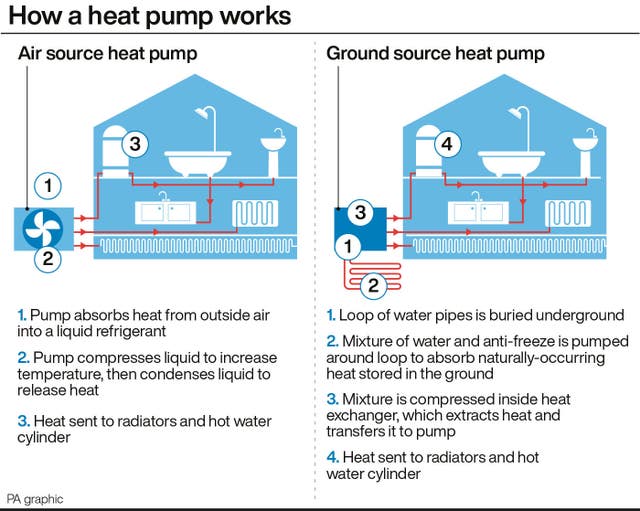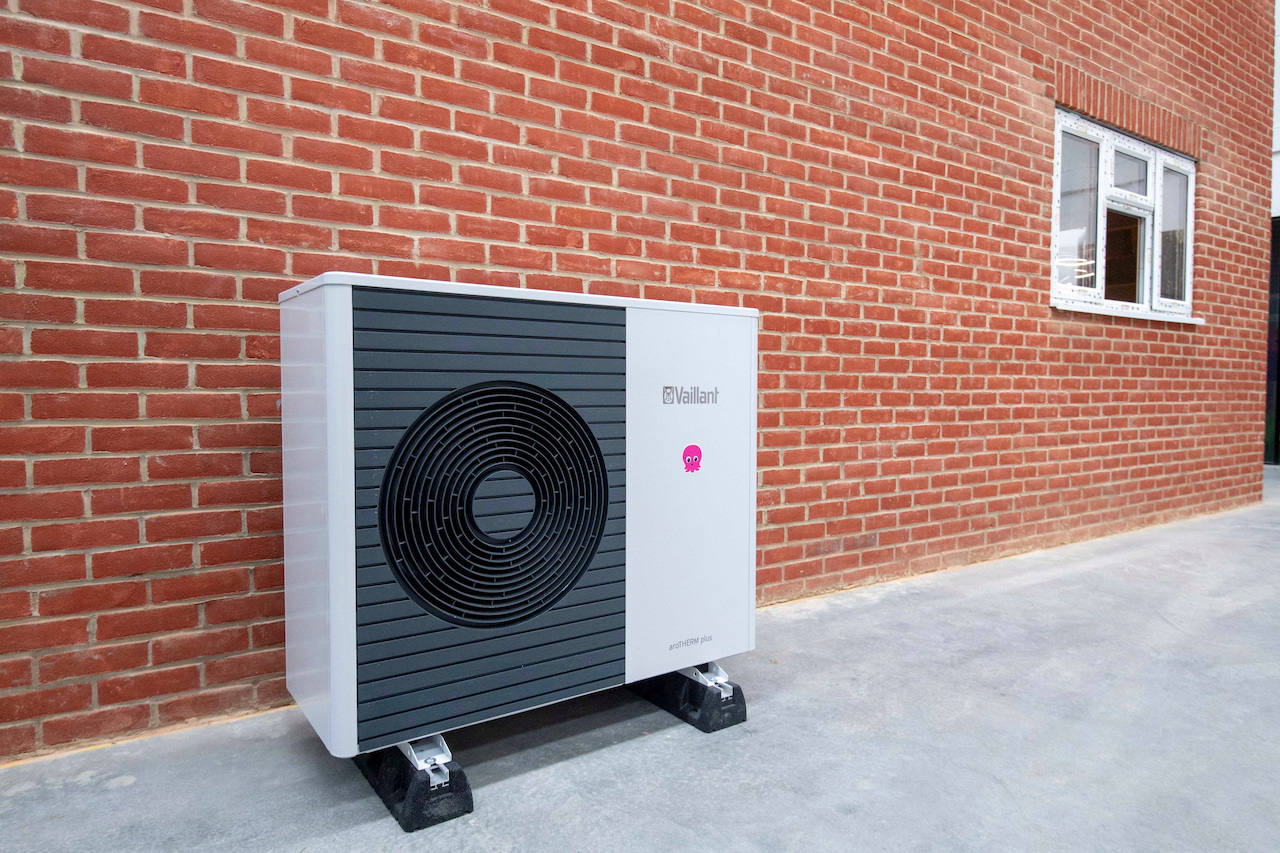Switching to low carbon heat pumps: Key questions answered
The Government has announced grants of £5,000 for households to replace gas boilers with the low carbon alternative as part of climate measures.
UK households are being offered £5,000 grants to replace gas boilers with low carbon technologies as part of efforts to cut emissions from heating.
Here are some answers to the key questions about one of the main technologies we could use instead of gas boilers.
What is a heat pump?
An air source heat pump looks like an air conditioning unit on the outside of buildings, and it works a bit like a fridge in reverse, using electricity to extract energy from the outside air to provide heating and hot water for homes.
There are also heat pumps that draw energy from the ground or water.
Because they are extracting heat from the environment – which they can do even at low outside temperatures – they produce around three times the energy they use, making them much more efficient than a gas boiler.
British electricity is increasingly powered by low carbon sources such as wind, making heat pumps a clean alternative to burning gas, while they also cut local air pollutants emitted by boilers such as nitrogen dioxide.

How much are they?
While costs vary, installing a new system can cost around £10,000 on average.
It is still a niche industry and it is expected costs will fall as the technology becomes more mainstream.
Octopus Energy has previously said it expects to nearly halve the cost within 18 months, and has announced it will install heat pumps for about the same cost as gas boilers once the Government’s £5,000 grant scheme launches next April.
The grants aim to make heat pumps a similar cost to boilers, although how much of the installation costs for the low carbon technology will be covered by the funding will vary.
How different are they to run?
The main difference is you do not get that immediate boost you can get with gas, when you feel cold and you fire up the boiler.
That is because a heat pump heats water in the radiators to a lower temperature than a gas boiler, so it warms a house more slowly.
But with a heat pump, the system works out the most efficient way to keep the house to the temperature you want and gets on with it.
You can programme in changes, such as being away on holiday and your return time, so the house will be warm for you when you come back.
Do you need a well-insulated home to run one?
All heating technologies work more efficiently and save you money if your home is well insulated, and improving insulation to save energy is a key part of cutting emissions from buildings.
Heat pumps work well in homes that are already reasonably well insulated, while if you live in a leakier house, such as a Victorian terrace, putting in some measures such as loft insulation and double glazing could help keep costs down in running a heat pump – just as they would if your home is heated by a gas boiler.
What other changes might I need to make, such as swapping out radiators or putting in underfloor heating?
Because radiators on heat pumps operate at a lower temperature than with gas, you might need to swap out a few of the oldest, single-panel radiators your home might have to ensure they are big enough to heat the room sufficiently.
They can normally be replaced with double- or triple-panelled radiators that fit in the same spot.
Underfloor heating works very well with heat pumps as it operates at a lower temperature than radiators, so it will continue to work if you have it, or if you are doing a wider refurb you could think about putting it in. It is not necessary to install it, however.
Currently, you do need a water tank for heating up your hot water, although new technology that stores heat for hot water in other ways could change that.
Do you save money from running one?
While there are some “time of use” tariffs, which allow people to use the electricity for running their heat pumps when it is off peak and therefore cheaper, most people will not be saving money at the moment.
That is because, although heat pumps use much less energy to create the same amount of heating, electricity is around three times the price of gas.
Part of the issue is that there are higher environmental levies on electricity than gas, adding 23% to electricity bills and less than 2% on gas, to pay for things such as subsidies for renewables, which were brought in to help clean up the electricity system.
By saying it is aiming to make heat pumps cost the same to run as fossil fuel boilers by 2030, as well as to buy them, the Government has indicated it will address this issue, but there are no details as yet.
What other technologies could be used to heat my home?
In cities, there is a role for district heat networks, which pipe hot water in underground pipes to bring heat from a central source, such as energy from a waste plant, rivers, or even former mines, to a heat exchanger in homes to provide heating and hot water.
And in some places, where hydrogen is being manufactured as a clean alternative to fossil fuels for industry, HGVs and other uses, hydrogen could be put through the gas pipe network to heat nearby homes with new boilers that use hydrogen instead of fossil gas.
Will I have to rip out my old boiler for one of these new technologies?
The Government has set an ambition for all new heating systems to be low carbon from 2035, but says families will not have to remove their existing fossil fuel boilers.
The plan aims to pave the way for households to make the shift – as the cleaner, affordable choice – over the next 14 years as they replace their old boilers.
The Press Association
Latest posts by The Press Association (see all)
- Princess Charlotte ‘s ninth birthday marked by picture release - May 2, 2024
- Strong passwords more important than ever, experts warn - May 2, 2024
- Princess Charlotte set to celebrate ninth birthday - May 1, 2024
- How edible flowers can make your dishes look and taste divine - April 30, 2024
- Beauty entrepreneur Liz Earle on turning 60: Ageing is a gift - April 30, 2024




















